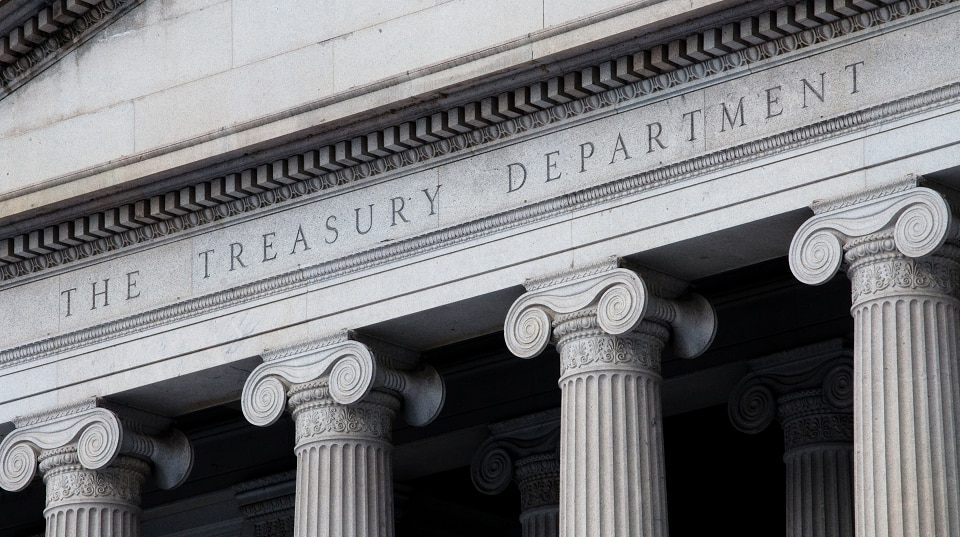by Jeff Schulze, CFA, Investment Strategist, ClearBridge Investments, Franklin Templeton Investments
Tune in and hear more in our latest “Talking Markets” podcast. A transcript follows.
For more information on ClearBridge Investments’s Anatomy of a Recession, please follow this link for the first quarter 2021 presentation.
Transcript
Host: Jeff, let’s start with your overall thoughts on how the economy and markets ended 2020, and what you’re seeing as we start the new year?
Jeff Schulze: Things are constantly changing, not only from an economic perspective, but a market perspective as well. And I think 2021 is going to take a lot of people by surprise on a positive note. If you look at the S&P 500 [Index], it was up 67.9% from the lows through year-end. In the third quarter, we had a 33.4% increase of economic growth. And this recovery was really unique in a number of different facets. It surprised to the upside on the earnings front. In fact, you saw historic earnings beats for both the second and third quarter. These were the strongest earnings beats that you’ve seen since 1996. And this is due to a combination of different things—companies had cut costs very quickly in anticipation of this recession, they’d maintain their margin structure, but also you had a very strong US recovery. And this is one of the key reasons why the market has skyrocketed from the March lows.
But the other thing really is the economy came on much quicker than anticipated. And there was a lot of talk about what the shape of the recovery ultimately would be. And against consensus expectations, it actually turned out to be a V-shaped recovery. And maybe this recovery is best embodied by looking at retail sales. It only took six months for retail sales to regain pre-COVID levels during this recession, that was exponentially quicker than what you saw during the dot-com bubble at 16 months, and then much, much quicker than what you saw during the global financial crisis (GFC) at 34 months. So, this was a very, very robust recovery.
But if you look at retail sales—retail sales came in negative in October, and they came in well below consensus expectations in November at -1.1%. And obviously the key reason for this is you’re starting to see COVID-19 taking a bite out of the US economy. Cases have skyrocketed as we’ve entered into the winter months here in the US. You’ve seen an increase of social distancing measures. You’re seeing economic retrenchment. In fact, over 29 states right now have some sort of restrictions on indoor eating. And it’s starting to show up in the economic data, but the key difference between today and what we saw back in March is that even though you’ve seen a big increase of cases today, deaths have not increased proportionally as what you saw at the beginning of the crisis.
Host: What about the labour market, from the big hit we took last year to where we are right now. What do you see there?
Jeff Schulze: [US] jobless claims spiked up to the high 800,000 range in the middle of December. It’s come down a little bit. So, you’re still seeing sustained labour weakness, but also, it was very evident in the note December jobs print that we got—it came in at negative 140,000 jobs created. That is the worst monthly job print that we’ve seen outside of March and April, really since the global financial crisis. And it has a lot of individuals thinking that we may be seeing a double-dip recession.
We don’t think that this is a double-dip recession. We think that this just is a slow patch. There’s a lot of liquidity that’s sloshing around out there, but I do want to highlight manufacturing PMI [Purchasing Managers Index] new orders. If you think about manufacturing PMI, if you’re not familiar with the survey, it’s a survey given to the manufacturers asking them how business conditions are, but also how business conditions look to be in the future and the most forward-looking component of that survey is new orders. Now manufacturing PMI new orders is synonymous with the business cycle. Usually when you see manufacturing PMI new orders accelerate, US economy accelerates one to two quarters after that point. And when it decelerates with a lag, of course, the US economy decelerates one to two quarters afterwards. The most recent print that we got was 67.9. That is a huge number. That is a very, very strong number. It’s very bullish for capital spending trends, very bullish for the US economy. So, this tells me that, although you are starting to see some sustained weakness in the labour market, that the US economy is going to be just fine.
The other thing I’ll mention about the jobs number that may make you feel a little bit better is that although it came in at negative 140,000 jobs, I actually view that jobs report as a strong report that shows the resilience of the US economy because you look underneath the surface, leisure and hospitality lost 498,000 jobs, right? Because of the retrenchment of the economic activity, you would expect that these would be where most of the job losses occur. And if you strip that out, it was actually a positive 350,000 jobs report, which shows that you are seeing economic strength broad-based. It’s just this particular area because of the nature of COVID is seeing higher job losses than anticipated. But the key is once you get back into a renormalised economy in the second or third quarter, a lot of these jobs are going to bounce back very quickly. So again, I think this is a soft patch rather than a double-dip recession.
Host: Right now, vaccines are rolling out in many countries, including here in the US. How is that going, and how do you factor that into your outlook?
Jeff Schulze: We’re likely going to hit herd immunity sometime in the second or third quarter of 2021. In fact, if you look at the end of the year, it’s expected to have 5.1 billion people inoculated. And you’ve gotten off to a pretty slow start here in the US. As of January 4th, only 4.6 million shots were administered versus the projected 20 million. So, we’re hoping for about a million per day, we’re at about 250,000 per day, but the print that we just got showed that there was 1.25 million people that were inoculated, which shows that we are starting to make progress, and we’re working out the kinks of getting people vaccinated. But the key here is that you’re going to inoculate a lot of frontline workers and high-risk individuals that are living in communal situations. And when you do that, that’s really going to drastically bring down the hospitalisation and the death rate. And it’s going to create a situation where economic activity is going to improve well ahead of herd immunity.
But once we reach herd immunity, there is going to be a powerful force that’s going to be unleashed on the US economy, which is consumer balance sheets and the excess savings that have been accumulated over the last year. Consumers have accumulated total excess savings versus pre-pandemic levels of US$1.4 trillion. Now you recently had a stimulus package that was released in December, US$600 checks are going to each and every American. If we assume that they only spend at 33% of that money, which is the same percentage that they spent with April stimulus checks, it is obviously going to boost total excess savings. And if we get another package from the Democratic sweep that just happened [in the US elections], it wouldn’t be a surprise to me if you see total excess savings over US$2 trillion as we get to herd immunity. And the stimulus packages were important because they’re going to really help drive low-to-middle income spending in the first quarter. And once you get to that second quarter, the baton is going to be handed off to your high-income households, which face no budgetary constraints, there’s a significant pent-up demand for services. So, our core view has and continues to be that you’re going to have this deferred gratification or revenge spending in the middle part of the year. And the last thing I’ll mention here is that the reason why there’s a lot of savings is not because of caution on the parts of households, which is what you saw during the global financial crisis (GFC). The reason why you’re seeing this huge increase of savings is because of mobility restrictions. You know, people can’t go out and spend, and obviously you’ve seen these huge government transfer payments. So, I think this is going to be a huge driving force on why we expect higher than consensus expectations for economic growth in the coming years.
Host: Ok, so that’s the consumer—what about companies, how are they looking?
Jeff Schulze: Corporations have really done a great job cost-cutting. They’ve also issued a lot of equities, they took advantage of low-cost financing. And because of all of these drivers, they have US$500 billion more in cash today versus pre-crisis. That cash can be used in a variety of different manners, like more CapEx [capital expenditure], inventory restocking cycle, dividends, or share buybacks. And a key driver in my opinion is going to be the inventory restocking cycle because inventory levels are currently at 2014 levels. That’s very low considering from a historic standpoint. And now that businesses finally have the visibility into the second half of the year, and they are going to anticipate this pickup in demand. That’s going to be a huge driver of GDP [gross domestic product] growth in the manufacturing sector in particular, over the next couple of quarters.
Host: So, a lot of reasons for optimism. Are there any other factors we haven’t touched on that also could spur growth?
Jeff Schulze: You have a very powerful tailwind from a macro perspective. You have the “macro trifecta”, these three ingredients have been key empowering strong economic recoveries. They’re lower long [interest] rates, a weaker [US] dollar and lower energy costs. And with this cycle in particular, long rates and energy costs have remained much more depressed than what you typically see during recessionary recoveries. And that’s going to provide a tailwind not only for 2021, but also 2022 as well, because if you think about a rise in long rates, the 10-year Treasury, usually that has a lagged effect on economic activity anywhere from 12 to 18 months, and with rates still being barely above 1%, again, that’s going to provide liquidity and extra momentum for the next year and a half. And it all comes to a new, old, normal, right? The new normal after the GFC was this secular stagnation, this low growth environment. Maybe we’re going back to the old normal, which is how economic cycles were prior to 2008 with higher growth. Consensus expectations for 2021 is expecting to see the strongest growth in 20 years. And it’s not just a one-year phenomenon because of the recession and easy comps. If you look at the 2022, that’s going to be expected to be the best growth since at least 2004. And mind you, this doesn’t take into consideration the stimulus package that was passed in December and the likely another stimulus package because of the Democratic sweep.
The one thing I will talk about is that the [US] stimulus package is really the cherry on the top, right? We didn’t need that stimulus package, but it’s going to go a long way and helping goose economic growth. And with that December package, that’s going to dump US$700 billion into the economy within the first five months of 2021. And to maybe put that package into context, that’s as big as the package, the full package that was done in the two worst recessions that we’ve seen in modern history, 1981, and then also 2009. So, this all leads to a situation where I think you’re going to see economic growth well above consensus expectations. I think we’ll probably see economic growth in 2021 at around 5.5%. That’s going to go a long way to helping risk markets continue to melt up over the course of the next couple of years. So again, we don’t think it’s double-dip recession, we think it’s going to be a slowdown. We think economic growth is going to surprise to the upside because of all of these dynamics that we just talked about.
Host: Jeff Schulze, Investment Strategist with ClearBridge Investments and his latest Anatomy of Recession piece. Thank you for joining us.
Host: And thank you for listening to this episode of Talking Markets with Franklin Templeton. If you’d like to hear more, visit our archive of previous episodes and subscribe on iTunes, Google Play, Spotify, or just about any other major podcast provider. And we hope you’ll join us next time, when we uncover more insights from our on the ground investment professionals.
Important Legal Information
This material reflects the analysis and opinions of the speakers as at 12 January 2021, and may differ from the opinions of portfolio managers, investment teams or platforms at Franklin Templeton. It is intended to be of general interest only and should not be construed as individual investment advice or a recommendation or solicitation to buy, sell or hold any security or to adopt any investment strategy. It does not constitute legal or tax advice.
The views expressed are those of the speakers and the comments, opinions and analyses are rendered as of the date of this podcast and may change without notice. The information provided in this material is not intended as a complete analysis of every material fact regarding any country, region, market, industry, security or strategy. Statements of fact are from sources considered reliable, but no representation or warranty is made as to their completeness or accuracy.
CFA® and Chartered Financial Analyst® are trademarks owned by CFA Institute.
What Are the Risks?
All investments involve risks, including possible loss of principal. The value of investments can go down as well as up, and investors may not get back the full amount invested. Stock prices fluctuate, sometimes rapidly and dramatically, due to factors affecting individual companies, particular industries or sectors, or general market conditions. Bond prices generally move in the opposite direction of interest rates. Thus, as prices of bonds in an investment portfolio adjust to a rise in interest rates, the value of the portfolio may decline. Treasuries, if held to maturity, offer a fixed rate of return and fixed principal value; their interest payments and principal are guaranteed.
Indices are unmanaged and one cannot directly invest in them. They do not include fees, expenses or sales charges.
Past performance is not an indicator or a guarantee of future results.
Data from third party sources may have been used in the preparation of this material and Franklin Templeton (“FT”) has not independently verified, validated or audited such data. FT accepts no liability whatsoever for any loss arising from use of this information and reliance upon the comments opinions and analyses in the material is at the sole discretion of the user.
Products, services and information may not be available in all jurisdictions and are offered outside the U.S. by other FT affiliates and/or their distributors as local laws and regulation permits. Please consult your own financial professional for further information on availability of products and services in your jurisdiction.
Issued in the U.S. by Franklin Templeton Distributors, Inc., the principal distributor of Franklin Templeton’s U.S. registered products, which are available only in jurisdictions where an offer or solicitation of such products is permitted under applicable laws and regulation. Issued by Franklin Templeton outside of the US.
Please visit www.franklinresources.com to be directed to your local Franklin Templeton website.
©2021 Legg Mason Investor Services, LLC, member FINRA, SIPC. “Anatomy of a Recession” is a trademark of ClearBridge Investments, LLC. Legg Mason Investor Services, LLC and ClearBridge Investments, LLC are subsidiaries of Franklin Resources, Inc.
Copyright © 2021 Franklin Templeton. All rights reserved.
This post was first published at the official blog of Franklin Templeton Investments.












